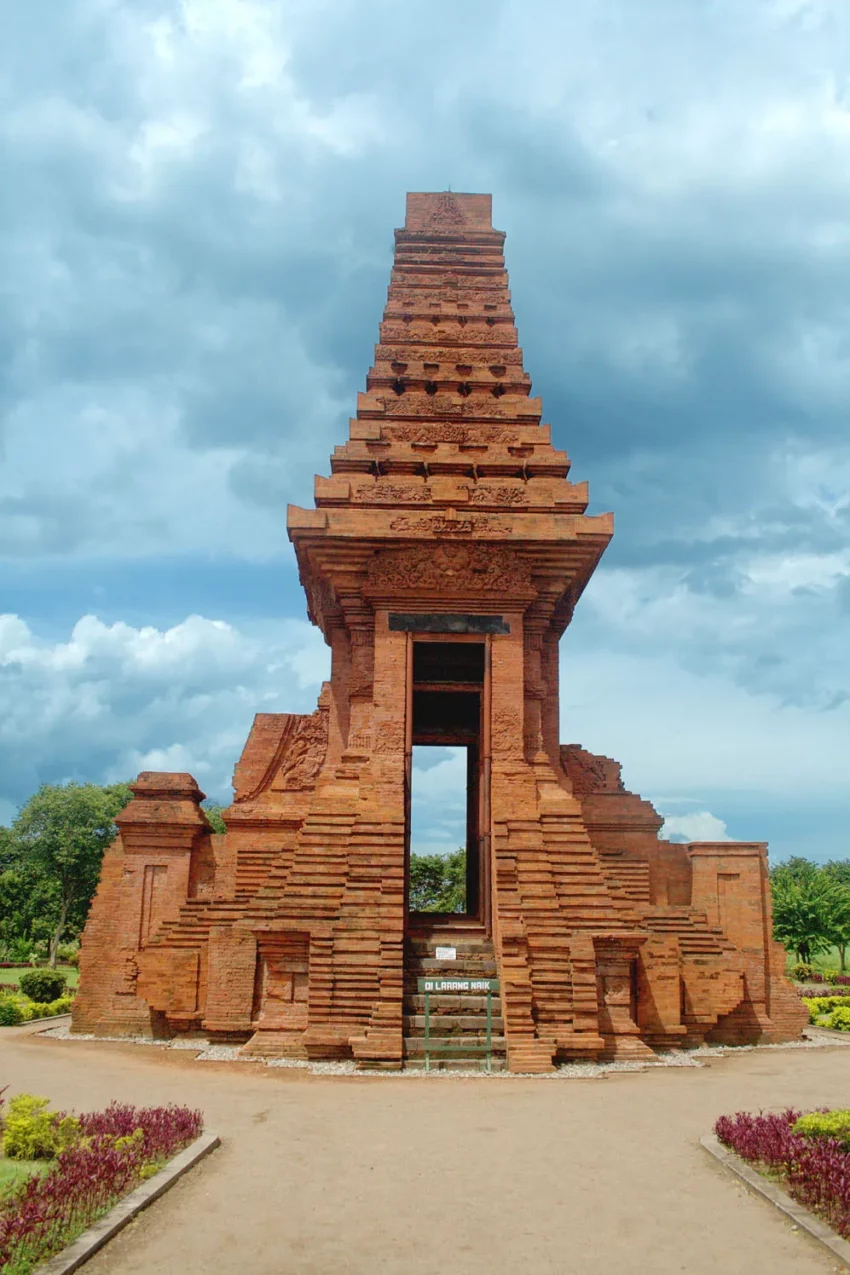An Overview of Trowulan
The former capital of the Majapahit Empire, Trowulan, is situated in the Trowulan Subdistrict, in the Indonesian province of East Java. This site is emblematic of the empire’s grandeur between the 14th and 15th centuries AD. With an expanse that is believed to have reached up to 100 square kilometers, Trowulan houses numerous archaeological relics, including temples, bathing places, and statues. The historic urban area was discovered by various officials and scholars, most notably Sir Thomas Stamford Raffles who governed Java from 1811 to 1816 AD.
Get your dose of History via Email
The Layout and Structures of Trowulan
The Majapahit capital of Trowulan was once a sophisticated urban center with a well-thought-out city layout and an intricate hydraulic system to manage water for its households, industries, and rice cultivation. The city’s landscape is dotted with remnants of grand architecture, such as the impressively designed gates and walls that once fortified this powerful kingdom’s heart.
Archaeological Reinforcement
Trowulan’s archaeological potential began to be recognized in the early 19th century. However, it wasn’t until the work of Dutch researchers, notably JLA Brandes and W.F. Stutterheim in the late 19th and early 20th centuries, that proper documentation and study began. Following Indonesian independence, efforts continued with the establishment of the Trowulan Site Preservation Institution in 1980. Despite these efforts, many parts of Trowulan have yet to be thoroughly investigated, as the region covers a large area and much of it is now inhabited by local residents.
Artifacts and Monuments
Among the significant artifacts discovered in Trowulan are numerous statues and high-relief carvings depicting deities and guardian figures from Hindu-Buddhist mythology. These testaments to the artistry of the Majapahit period were often made from andesite stone. Most notably, the statues of Dwarapala, a gigantic guardian statue, exemplify the cultural and religious influences on the Majapahit Empire. In addition, the discovery of earthenware materials, roof tiles, and bricks embellished with intricate designs indicates the complex craftsmanship and trade that flourished during this era.
Religious Heritage
Trowulan is also indicative of the syncretic nature of Majapahit belief systems, which blended indigenous animism, Hinduism, and Buddhism. Statues of both Hindu deities and Buddha figures unearthed from this site reflect the way these spiritual traditions harmoniously coexisted. Moreover, Trowulan includes landmarks such as Candi Brahu, believed to be a sacred cremation site, and Candi Tikus, a ritual bathing place, further displaying the religious diversity and practices of the time.
Modern Recognition and Conservation Efforts
In the contemporary era, Trowulan has attracted both national and global attention. Proposals were made to include Trowulan in UNESCO’s list of World Heritage Sites, emphasizing the site’s historical and cultural significance as the last capital of the great Hindu-Buddhist empire in South East Asia. The Indonesian government has also recognized Trowulan as a national archeological site and has made efforts to preserve it. There are ongoing conservation projects aiming to maintain the integrity of Trowulan’s historical remnants, though challenges such as urban encroachment and illegal artifact trafficking persist.
Conclusion
The ancient city of Trowulan continues to offer a window into the grandeur of the Majapahit Empire. It stands as a testimony to the empire’s prowess in architecture, urban planning, and the arts as well as its religious and cultural dynamics. Ongoing preservation, archaeological research, and global recognition are vital for ensuring that Trowulan’s historical and educational potential is fully realized. By studying and safeguarding sites like Trowulan, we honor the legacies of past civilizations and encourage a deeper understanding of human history.
Sources: Wikipedia

